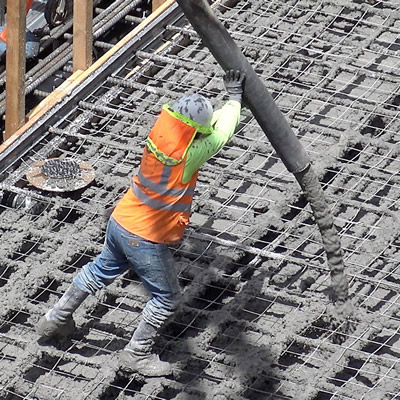Industry Training Authority BC is changing its ways
CEO Gary Herman said the organization is placing new emphasis on the right skills, in the right place, at the right time.

Industry Training Authority CEO Gary Herman. — Jeff Vinnick photo courtesy of Industry Canada
The Industry Training Authority (ITA), the British Columbia Crown corporation that is responsible for leading the province's trades training system, is changing the way it operates.
At a recent workshop in the Lower Mainland, the ITA CEO Gary Herman discussed what his organization has been up to and what to expect in the future.
“We’re ensuring the province has the right skills, in the right place, at the right time,” said Herman, who was the keynote speaker at the Educators, Miners and Explorers Workshop that was held in Richmond in October 2014.
The ITA is responsible for apprenticeships and industry training programs in B.C. ITA works with employers, employees, industry, labour, training providers and government to issue credentials, manage apprenticeships, set program standards and increase opportunities in the trades.
The refocusing of the ITA is part of B.C.’s Skills for Jobs Blueprint: Re-engineering Education and Training. One of the objectives of the plan, which the provincial government announced in April 2014, is to build a stronger partnership with industry and labour to deliver training and apprenticeships.
Restructuring the organization
The ITA’s new focus follows a review of the organization by independent consultant Jessica McDonald. In the fall of 2013, McDonald held consultations with the stakeholders of various trades training organizations in B.C., and in February 2014 she submitted her final report to government.
The report sets out 29 recommendations to enhance and strengthen B.C.’s trades training system. All of the recommendations have been accepted and will be implemented in the Jobs Blueprint.
“The ITA was originally founded as six separate industry training organizations, or ITOs,” Herman said. “They set program standards for training and apprenticeships in automotive, construction, hospitality, horticulture, transportation and resources. They were also intended to be the voice of those industries.”
Unfortunately, the original model didn’t work as well as it had been hoped.
“As a result, the ITA is insourcing the responsibilities of the former ITOs into four areas,” Herman said. “They are the LNG Action Plan for B.C., re-aligning training investment to meet demand, transforming industry engagement and enhancing ITA capability.”
Planning to meet future opportunities
The changes notwithstanding, B.C.’s trades training system was never in serious trouble. There are about 35,000 registered apprentices in the industry training system today, which is more than double the number when ITA was created in 2004. In addition, the ITA is issuing three times as many credentials.
But the ITA was created almost a decade ago, and since that time the provincial economy has changed considerably. For example, British Columbia has many potential economic opportunities, such as the growth of the liquefied natural gas sector, coming its way over the next 10 years. To take advantage of those opportunities, B.C.’s industry training system will need to perform at the top of its game.
Herman said the purpose of his presentation at the workshop was to give the industry an update on what’s been happening at the ITA.
“It was also a chance to talk about the importance of succession planning with employers,” he said. “It's time for employers to hire apprentices to replace retiring workers. Growth is on the horizon, and labour shortages are already starting to appear.”
Other workshop presenters
The workshop at which Herman spoke was co-hosted by the BC (Mining) Human Resources Task Force and the BC Centre of Training Excellence in Mining. The one-day event lived up to its name, with a multitude of presentations that covered education, mining and exploration.
For example, Brian Cox, VP of corporate affairs for the Mining Association of BC; Gavin Dirom, president and CEO of the Association for Mineral Exploration British Columbia; and Paul Allard, executive director of the British Columbia Stone, Sand and Gravel Association, discussed the current exploration and mining landscape in B.C. One of the questions they considered is the way the industry is changing and what effect those changes are liable to have on employment now and in the future.
Tlell Glover of Northwest Community College discussed the Mining Environmental Monitoring Assistant program, a unique dual pilot program in northwest B.C. that offers post-secondary training to high school students while at the same time providing credit towards graduation. And Jill Tsolinas and Danielle Smyth of the BC Centre of Training Excellence in Mining, and Cathy van Soest of BCcampus discussed the question What’s Up with the New BC Centre of Training Excellence in Mining?




